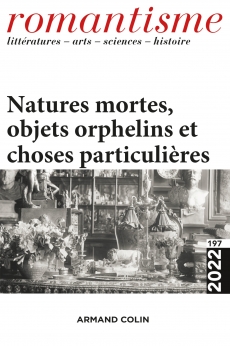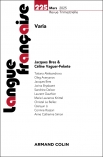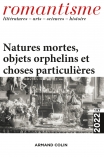
ROMANTISME N°198 (4/2022)
Pour acheter ce numéro, contactez-nous
Recevez les numéros de l'année en cours et accédez à l'intégralité des articles en ligne.
Jules-Alexandre Grün (1868-1938) fut à la fois un des affichistes les plus appréciés de sa génération et un peintre plusieurs fois médaillé au Salon, atteignant les cimes de la renommée en 1911 avec l’immense portrait de groupe du Tout-Paris de l’époque : Un vendredi au Salon des Artistes Français. Avant cette apothéose, Grün s’était surtout illustré comme peintre de natures mortes, un genre qu’il pratiqua toute sa vie durant, avec une constance non dénuée d’invention. Des premiers tableaux du bohème dialoguant avec la tradition aux prudentes innovations de l’artiste accompli, cet article propose un regard sur la place qu’occupe la nature morte dans son œuvre en mettant en résonance les transformations stylistiques de la peinture de Grün avec sa progression de carrière et l’évolution du goût bourgeois.
Jules-Alexandre Grün (1868-1938) was both one of the most appreciated poster creators of his generation and a painter several times rewarded at the Salon, reaching apotheosis in 1911 with the immense group portrait of Parisian Society called Friday at the French Artists’ Salon. Before then, Grün had made his reputation mainly as a still life artist, and he painted in this genre his whole life, with a regularity nonetheless not devoid of invention. This paper, in surveying the work from the early efforts of a bohemian exchanging with tradition to the prudent innovations of the accomplished artist, presents an analysis of the position of still life in Grün’s work by confronting the stylistic transformations in his paintings with his artistic development and the evolution of bourgeois taste.

